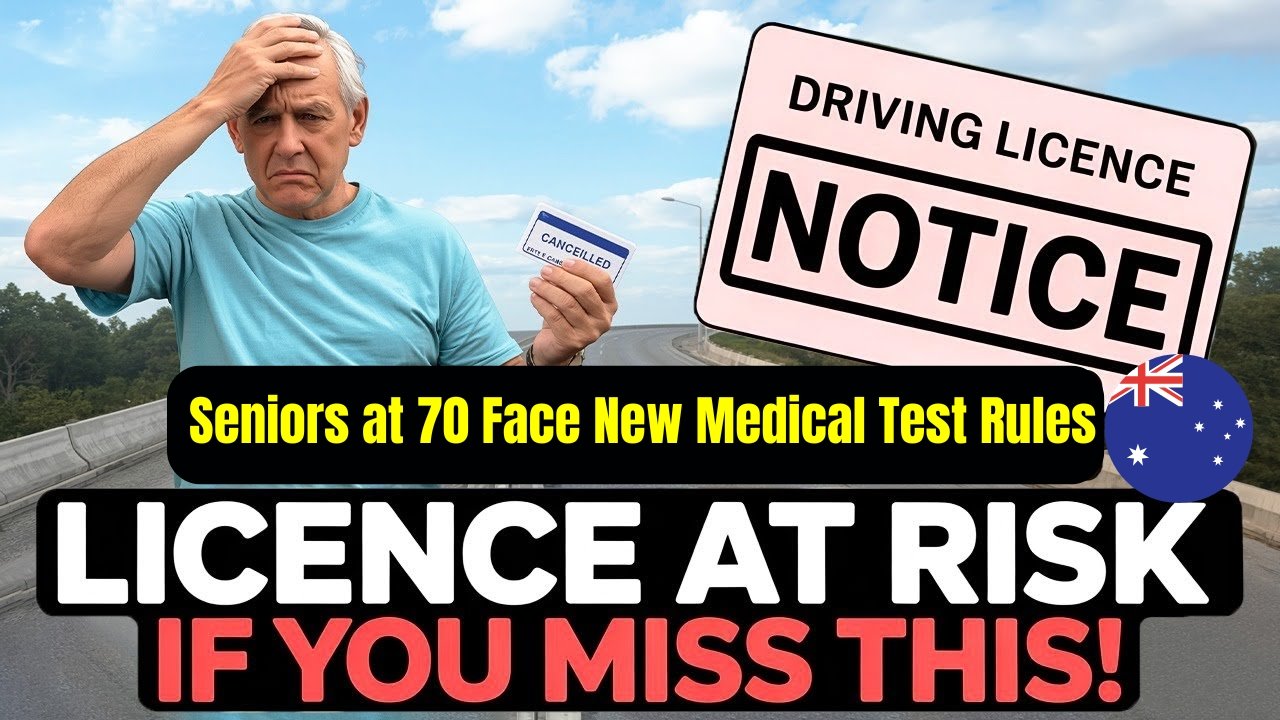
Starting in 2025, our nation will roll out some big updates to the rules for anyone over 70 who wants to keep their driver’s licence—changes that could touch most elderly Aussies and that will reshape the way we guard New Medical Test Rules while still giving seniors the freedom to move.
Why the New Tests Are Coming and How They’ll Work
The upgrade comes because the number of older Australians keeps climbing, and safety experts feel more and more worried about the dangers that can come when the body slows down. Age can dull eyesight, slow reflexes, and fog quick thinking—all the stuff that makes us take a curve a little too wide. Rather than forcing a blanket solution, the officials drew up a kit of common tests to spot little problems early, while still letting lots of older drivers keep their keys a while longer.
These improvements will not boot grandparents out of the driver’s seat for good. They will put smart rules in place that reward safe drivers of any age, keeps the rest of us safer too, and lets the busier family in the back seat cheer a little louder for the busy grandparent who still drives them to footy and whipped-cream milkshakes.
How These New Rules Affect Your Driving Once You Hit 70
If you’re already 70, or you’re about to turn 70, the way you renew your driver’s licence has changed. Starting now, the rules include extra medical check-ups and the number of them grows as you keep passing the birthdays:
From 70 to 74, you’ll have a medical check every two years. Once you turn 75, that jumps to once a year. These check-ups will be looking at vision, memory, and any health issues that could make steering a car harder or less safe.
Besides the medical forms you fill out, the doctor may suggest a driving test. The test is not meant to take your licence away; it helps show how you may change and what to fix to help you keep driving in a safe way.
Rules Look Different, State to State
The big idea about checking health at 70 and older is the same everywhere, but how it works can shift from one state to the next. In Queensland, drivers past 75 now have to keep a medical note in the car to show they’re healthy enough to drive. In New South Wales there’s a yearly check starting at 75, and for 85 and older drivers, a full test could be the next step if the doctor thinks it’s a good idea.
Victoria is re-examining its driving rules after a serious crash caused by an elderly motorist. The accident is forcing everyone to think again about how to protect both personal freedom and community safety—a debate taking place in living rooms and community halls right across Australia. The conditional licence idea, already in practice by many states, provides a middle-ground solution. Instead of an automatic yes or no when someone renews their licence, officials write limited rules that fit each driver’s situation. The licence now might say you can only drive between 9 a.m. and 5 p.m., must keep to 40 km/h, or can drive only within a 5-kilometre circle. The aim is to help older drivers keep their independence while managing risk.
Making These New Rules Work for You
Seniors and their families should learn about the changes sooner rather than later. Schedule your medical exam a few weeks before the licence expiry to dodge last-minute problems. A routine visit to your family doctor each year can catch any condition that might affect the driving test, helping you plan rather than react. Because the conditional licence rules are now flexible, you might not need to quit driving altogether if a particular skill is wavering. Instead, you might keep the car for safety in the right conditions.
Finding the Balance: Independence and Safety
When older folks talk about driving, it ends up being about a lot more than lanes and stop signs. Driving has become a symbol of freedom—freedom to meet a friend for coffee, to see a doctor without a long bus ride, or to stop for groceries whenever you want. Kicking that freedom feels scary for many.
That’s exactly why the new rules try to tread carefully. Instead of a blanket “you’re too old” sign, there are step-by-step assessments that help older drivers see if they’re still road-ready or if a few tweaks would help. The aim isn’t to take the car away but to keep life going without too many bumps.
If you’re an older driver in Australia, don’t expect to hand in your licence the day your birthday cake’s lit. The new rules create a chance for to have honest, ongoing chats about staying safe and staying independent as life changes.